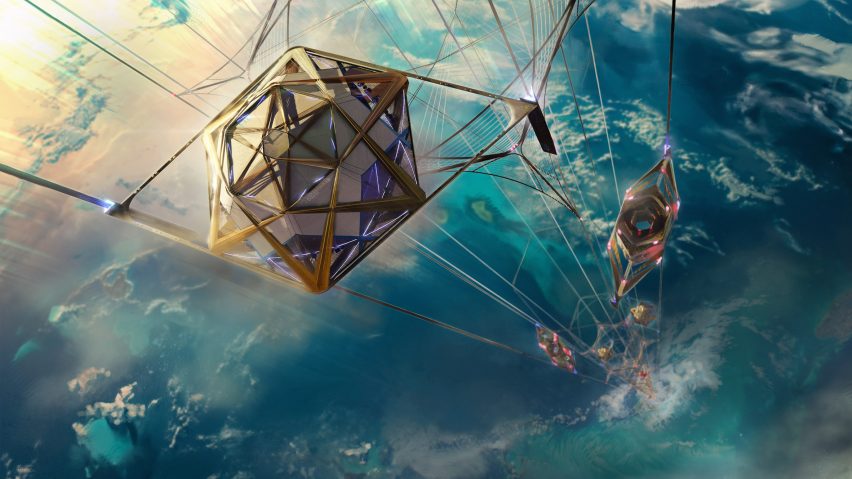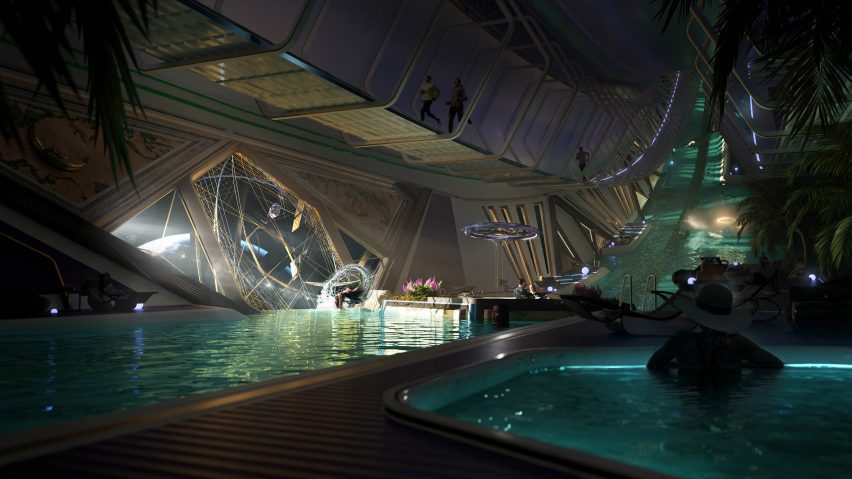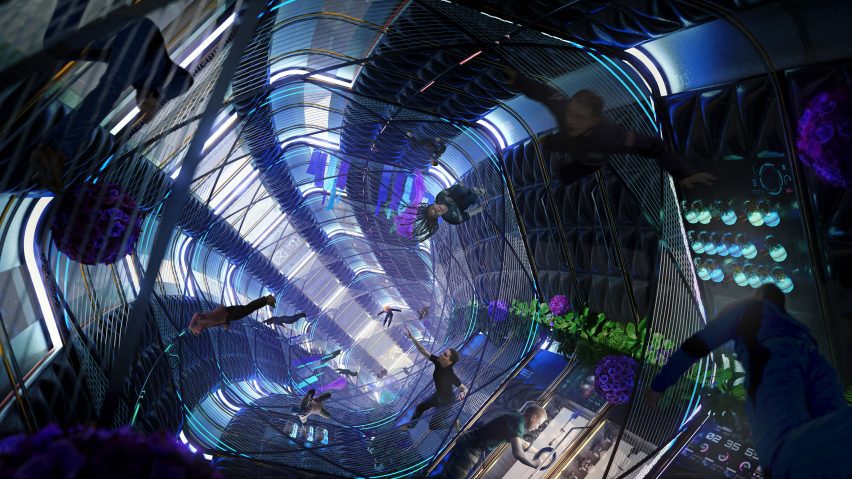
Jordan William Hughes designs space elevator that "connects the ocean to the stars"
Architect Jordan William Hughes has created a conceptual design for a space elevator that would travel between an ocean-based spaceport and a multi-use space station.
Hughes developed the design for the space elevator – which he believes would offer a more efficient alternative to traditional space travel – based on existing research by physicists and engineers.

The proposed elevator would function by using a captured asteroid in geostationary orbit, which would act as the counterweight for an ocean-based spaceport. The two would then be connected by a robust tether that would be lowered to Earth from the asteroid.
This connection would allow for small drones to ascend and descend by climbing the tether, transporting both people and cargo between the sea-level spaceport and a space station situated more than 26,000 kilometres above Earth.

The spaceport, operating as an Earth-based anchor, was designed to sit on a moveable vessel to avoid hazardous weather conditions on Earth.
"My project aims to build upon all previous concepts to showcase the reality of what may be possible; a lightweight, movable space elevator that connects the ocean to the stars," Hughes told Dezeen.
"I wanted to design a project I myself would love to visit, something that can be efficient and sustainable, but also luxurious and extravagant".
Visualisations of the space station depict futuristic interiors with views overlooking Earth.
According to Hughes, a space elevator would offer a much cheaper and more efficient mode of transport to space in comparison to rockets which are both expensive and require lots of fuel.
"The ability for mankind to have a series of continuous vertical portals into space would radically change the space industry, making it vastly more affordable and realistic to transport cargo and space-tourist alike," Hughes said.

"There are several huge challenges that would have to be overcome before any proposal like this could become reality, the most difficult is to develop a suitable material for the elevator tether itself," Hughes said.
"Despite these challenges; the concept, the physics and the reasoning all point to a future of space elevators."
Hughes, who is currently working as a concept artist at British architecture studio Foster + Partners, developed the concept in his spare time. The space elevator recently won a prize in the Jacques Rougerie International Competition held in Paris, France, for the Architecture and Innovation for Space category.
Other design stories relating to space include lunar spacesuits designed by Prada for a NASA moon mission and a 3D printing technology developed by ICON to build roads, launchpads and homes on the moon.
The images are courtesy of Jordan William Hughes.